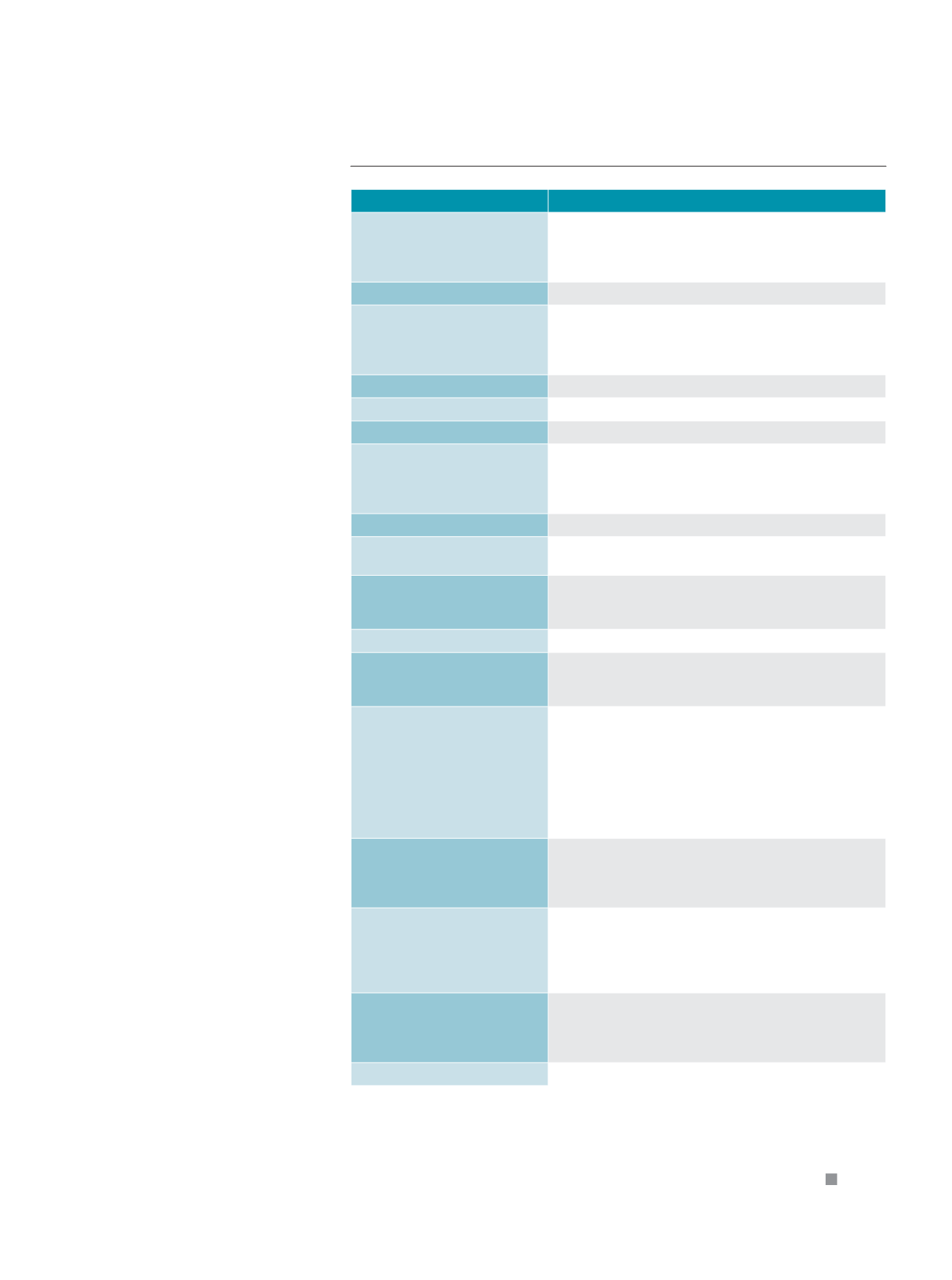

www. c a b l i n g c o n n e c t i o n . c om . a u
7 9
ENCODING V. MODULATION
Modulation means superimposing the
desired signal by changing one of the
properties of the carrier (e.g.: frequency,
amplitude, phase) to represent the original
signal carrying the information.
This enables the original signal to travel
farther. The original signal is recovered by the
reverse process – de-modulation.
Encoding means converting analogue
signals to digital. Several encoding schemes,
as mentioned above, use binary codes
according to a particular algorithm.
TRANSPORT MEDIA OPTIONS
The communications media used in
various scenarios include bounded media
(copper and optical fibre) and unbounded
media (wireless).
The choice depends on many factors.
However, bounded media generally perform
better than unbounded media, under the
same conditions. This is the outcome of the
Shannon-Hartley Law.
Generally speaking, everything else being
the same, optical fibre provides the highest
bandwidth (lowest attenuation, longest
distance) between transmitter and receiver.
Copper cabling is generally suited for
indoor applications, where data rates of more
than 1Gb and shorter distances are involved.
The transmission medium’s bandwidth
requirements depend on factors such as the
applications being supported simultaneously,
maximum latency tolerated by the most
sensitive application, electromagnetic noise,
distance, data security requirements and
reliability of the medium.
HOWMUCH BANDWIDTH?
Often, this question is asked in the
context of determining type of medium,
number of simultaneous applications
involved and distance.
This is a complicated question, and a
detailed answer cannot be given here. Table
2 is a generic guide to bandwidth (data rate)
requirements.
CONCLUSION
Bandwidth is a finite resource and needs to
be managed efficiently.
New technologies are constantly being
developed to get the highest possible
density of bits per Hertz.
Transmissionmedia are a crucial component
in achieving bandwidth efficiency.
Table 2: Guide to bandwidth requirements
APPLICATIONS
TRANSFER RATE
Netflix
0.5-1.5Mbps – minimum broadband connection speed
2-3Mbps for SD video on TV
5Mbps – best HD video, audio experience
25Mbps – ultra HD 4K
Web page or email
minimal
Apple iTunes
music streaming or download
Webcam video (352×288 at
15fps)
128kbps
298kbps
192kbps to 256kbps
Skype high-quality video chat
400kbps
AM radio
20kbps – excellent bit rate for broadcasts
FM radio
32kbps – industry standard for broadcasts
MP3 audio
lossy data compression.
32kbps – acceptable only for speech
128 or 160kbps – mid-range bit rate quality
192kbps – high-quality bit rate
320kbps – highest supported by MP3 standard
Digital audio broadcasting (DAB)
256kbps – MP2 bit rate for high-quality signal.
Static image
16-128kbps – used for videophone when significant
movement is not expected
Standard video broadcast (video
conferences, webinars, etc)
128-384kbps – current internet standard for video
broadcasting; high-speed connection (DSL, cable, etc.) can
support these broadcasts
Very high quality broadcasting 1128kbps – for fast action video
SDTVMPEG-2
HDTV (MPEG-4)
HDTV 1080i (MPEG2)
1.15Mbps max
9.8Mbps max – HDTV
25Mbps approximate
WAN (wide area network)
ISDN with two 64kbps channels (144kbps gross bit rate)
V.90 modems – 56kbps down, 33.6kbps up
V.92 modems – 56kbps down, 48kbps up
ADSL <= 8Mbps,
ADSL2 <= 12Mbps
ADSL2+ <= 24Mbps
VDSL2 <= 200Mbps
OC-192 10Gbps
LAN (local area network)
10Mbps 10BASE-T
100Mbps fast Ethernet
Gigabit Ethernet
10GbE
WLAN (wireless local area
network)
802.11b 11Mbps
802.11a 54Mbps
802.11g 54Mbps
802.11n 600Mbps
802.11ac 6.7Gbps
Mobile data
3G – 2001: UMTS-FDD (WCDMA) 384kbps
2011: HSPA+ accelerated (withMIMO) 42Mbps downstream
WiMAX (IEEE 802.16e) 144Mbps down, 35 Mbps up
LTE (4G) 100Mbps down (360MbpswithMIMO2x2), 50Mbps up
Cable broadband
52Mbps (Coaxial)
















